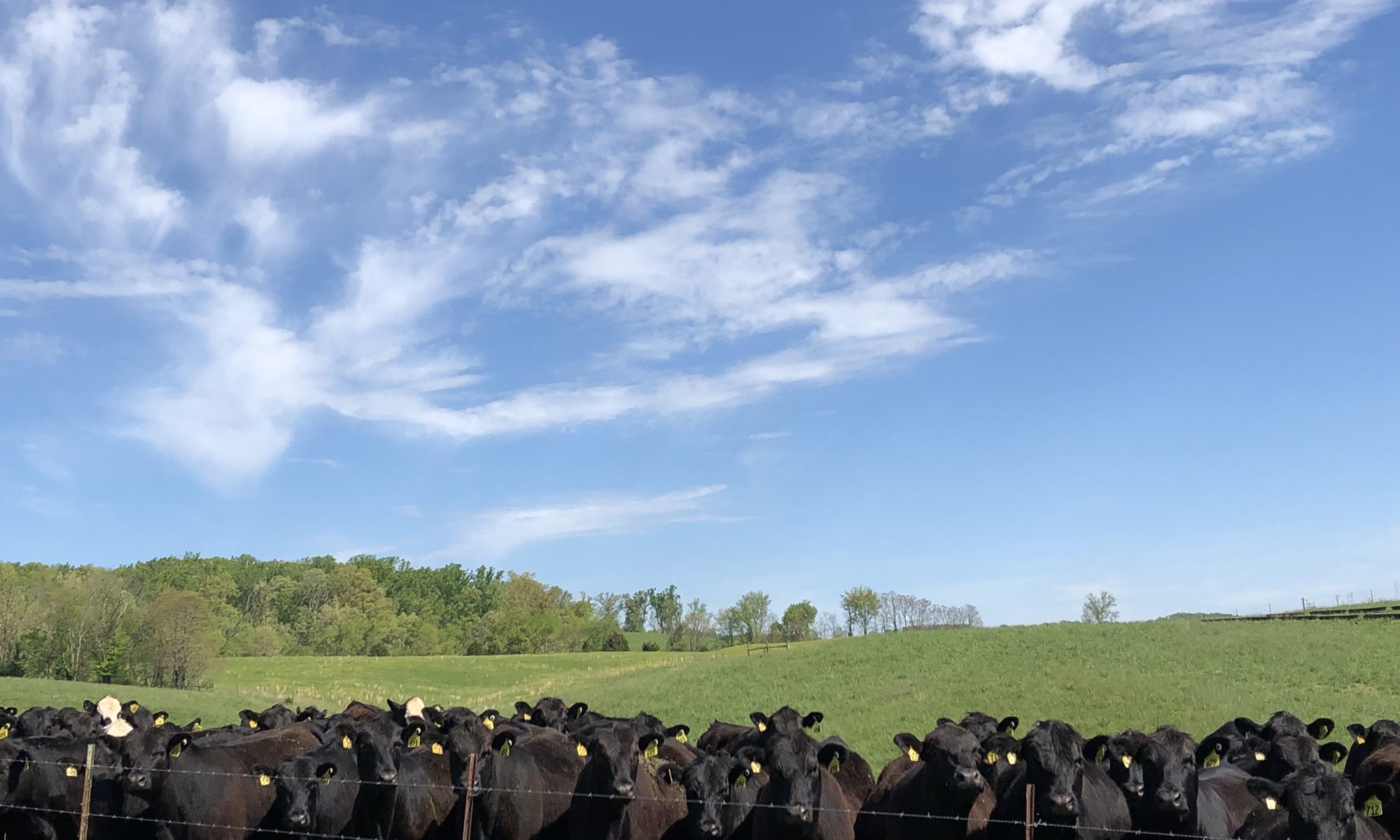

Dr. Katie Mason
Assistant Professor and Extension Beef Cattle Nutrition Specialist
Department of Animal Science
P: 865-974-8941
Minerals are a crucial part of beef cattle nutrition. It is important to provide a complete mineral package to your cattle to make up for deficiencies in the diet. While mineral programs may look a little bit different for each farm, there is one mineral that is on many minds this time of year: magnesium (Mg). Magnesium is essential for optimal growth, reproduction, and development, and is found in bones, teeth, and soft tissues.
The reason many people are considering feeding high-magnesium mineral right now is because the occurrence of grass tetany is most prominent in late winter and early in the spring as forage starts to green up and grow rapidly. Grass tetany or grass staggers, sometimes called hypomagnesemia, is a disorder associated with low Mg levels in the blood and cerebrospinal fluid. The disorder is complex in its cause; there are a few situations that can lead to low levels of magnesium, including low levels of Mg in the diet, a diet with nutrient imbalances that affect the metabolism of Mg, and high levels of milk production. The disorder is most often seen in animals grazing cool-season annual and perennial grasses and especially affects animals in early lactation.
Several soil-related factors can contribute to the disorder including level of magnesium in the soil, soil temperature, and soil moisture. High levels of potassium and nitrogen in the soil interfere with Mg uptake by plants, meaning the forage has low magnesium availability for the animal. There are a few precautions to take when it comes to pasture management. Pastures deficient in magnesium may be limed with dolomitic limestone, but this may not fully solve the problem, especially in waterlogged soils which are common this time of year in the Southeast. Incorporating legumes into the pasture may increase magnesium levels compared to grass pastures alone. Another precaution is to wait until grass is 4 to 6 inches in height before grazing. Again, these management practices are not guaranteed to prevent grass tetany, but certainly would not hurt.
Common symptoms of grass tetany are nervousness, muscle twitching, staggers when walking, and later, the animal may go down on its side with muscle spasms and convulsions. Death may result if the animal is not treated. Many times, when animals are found dead due to grass tetany, the illness was not actually observed because death can result very quickly after the onset of symptoms. Older animals with young calves (2 months old) are more susceptible because when magnesium levels drop, because they are not able to mobilize it from bones like a young animal. Grass tetany can still affect young or dry cows and growing calves, but it is better to graze these animals on higher risk pasture. While magnesium treatments administered by a veterinarian may be required in extreme cases, the most dependable form of control is supplying a mineral supplement with a relatively high concentration of magnesium.
Minerals that are not considered to have high magnesium levels have between 1 and 4% Mg, whereas “hi-mag” minerals typically have around 12 to 14%. Across the Southeast, the most common time to see grass tetany is mid-February through mid-April, so this coincides with the time that high-magnesium mineral should be fed to cattle. Magnesium is not stored in the body, so it is important for cattle to meet their intake requirements daily. Some general guidelines for supplementing magnesium, taken from “Mineral Nutrition of Beef Cattle” (UT Extension PB 1749), can be found below:
• Provide least 1 oz. per day of magnesium oxide to yield at least 0.6 oz. of magnesium.
• The supplement should contain either magnesium oxide or magnesium sulfate (not magnesite or dolomitic limestone).
• Generally, loose mixtures are preferred in situations where there is a history of grass tetany, but blocks may be “OK” in low-risk situations.
• Keep hay available until cattle completely stop consuming it.
• A supplement containing cereal grains will provide the energy that cattle need to overcome energy deficits and may help prevent grass tetany.
• After starting cattle on high-magnesium supplements, continue until “danger” is past in the late spring.
• Commercially prepared mixtures typically provide the entire mineral profile which is critical during the rebreeding period.
To prevent grass tetany, it is desirable to have magnesium intake at about 0.6 oz. per day. While some of this may be supplied by forage and feed, it may be desirable to obtain most or all of this level from supplemental mineral, especially in high-risk situations. Remember the Benjamin Franklin quote: “an ounce of prevention is worth a pound of cure.”
